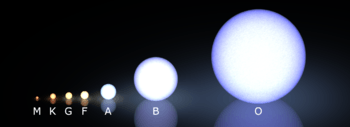HD 117939
| Observation data Epoch J2000 Equinox J2000 | |
|---|---|
| Constellation | Centaurus[2] |
| Right ascension | 13h 34m 32.65s[1] |
| Declination | −38° 54′ 26.0″[1] |
| Characteristics | |
| Spectral type | G4V [1] |
| Details | |
| Temperature | 5,730 [1] K |
| Metallicity [Fe/H] | -0.29 [1] dex |
| Age | 6.1 [1] Gyr |
| Other designations | |
| Database references | |
| SIMBAD | data |
| Data sources: | |
| Hipparcos Catalogue | |
HD 117939 is a Sun-like star 98 light years (30.23 parsecs) from the Sun. HD 117939 is a G-type star and a near solar twin, It is much old than the sun at 6.1 billion years, compared to the sun at 4.6 billion years old. At 6.1 billion years old, HD 117939 has pasted its stable burning stage.[1] HD 117939 is found between the constellations of Scorpius. HD 117939 has a brightness - apparent magnitude of 7.291.
To date no solar twin with an exact match as that of the Sun has been found, however, there are some stars that come very close to being identical to that of the Sun, and are such considered solar twins by the majority of the public. An exact solar twin would be a G2V star with a 5,778K temperature, be 4.6 billion years old, with the correct metallicity and a 0.1% solar luminosity variation.[3] Stars with an age of 4.6 billion years are at the most stable state. Proper metallicity and size are also very important to low luminosity variation. [4][5][6]

Sun comparison
This chart compares the sun to HD 117939.
| Identifier | J2000 Coordinates | Distance (ly) |
Stellar Class |
Temperature (K) |
Metallicity (dex) |
Age (Gyr) |
Notes | |
|---|---|---|---|---|---|---|---|---|
| Right ascension | Declination | |||||||
| Sun | — | — | 0.00 | G2V | 5,778 | +0.00 | 4.6 | [7] |
| HD 117939 [8] | 13h 34m 32.6s | –38° 54′ 26″ | 98 | G4V | 5,730 | -0.29 | 6.1 | [9] |
See also
References
- 1 2 3 4 5 6 7 8 "HD 117939". SIMBAD. Retrieved 2016-09-26.
- ↑ "HD 117939". Sky Map. 2008. Retrieved 2016-09-26.
- ↑ NASA, Science News, Solar Variability and Terrestrial Climate, Jan. 8, 2013
- ↑ University of Nebraska-Lincoln astronomy education group, Stellar Luminosity Calculator
- ↑ National Center for Atmospheric Research, The Effects of Solar Variability on Earth's Climate, 2012 Report
- ↑ Most of Earth’s twins aren’t identical, by Ethan on June 5, 2013
- ↑ Williams, D.R. (2004). "Sun Fact Sheet". NASA. Retrieved 2009-06-23.
- ↑ HD 117939 at SIMBAD - Ids - Bibliography - Image.
- ↑ Porto de Mello, G. F.; da Silva, R.; da Silva, L.; de Nader, R. V. (March 2014). "A photometric and spectroscopic survey of solar twin stars within 50 parsecs of the Sun; I. Atmospheric parameters and color similarity to the Sun". Astronomy and Astrophysics. 563: A52. arXiv:1312.7571
 . Bibcode:2014A&A...563A..52P. doi:10.1051/0004-6361/201322277.
. Bibcode:2014A&A...563A..52P. doi:10.1051/0004-6361/201322277.